MEDICAL RESEARCH


Medical researchers at UND and beyond have been working to fight cancer more effectively with ‘superantigens’



HOW AGILE IS YOUR WORKFORCE?




Medical researchers at UND and beyond have been working to fight cancer more effectively with ‘superantigens’



HOW AGILE IS YOUR WORKFORCE?



Ed uc at io nh as be en re im ag in ed by th eW illi ston Sc hoo lD ist ri ct #1 us ing at ota ll yu niqu el ea rn in ge nv ir onme nt whi ch ut il iz es in no va ti ve ,f le xib le ,a nd te ch no lo gy-ri ch le arn ing. In th ef orme rp oo l- tu rne d- scho ol, th eA SB In no va tio nA ca de my isa pla ce wh er es tu de nt sl ea rn at th eir ow np ac et hr oug hp er sona li zed le arni ng ini ti at iv es whi ch co mb ine re al-w orld learnin go pp or tu ni ti es th ro ug hc ommu ni ty pa rt ne rs hi ps and indiv idua li ze dp ro gram sb ased on in te re st sa nd as pi ra tio ns .T he re su lt: conf iden t, fu tu re -r ea dygr ad ua te s.






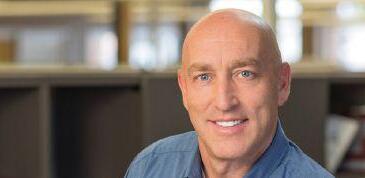
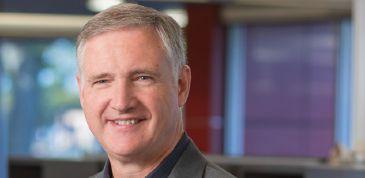


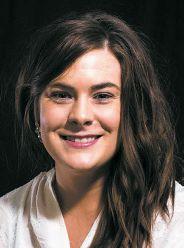
Wh atwe've lear nedovert he last decadeist hatt he Nort hDakotaoil andn at ural gas industry is incred ibly resil ient .Regard less of market cond it ions,itconti nues to bea majorforce in ourstate's economy.
-749,999,999
-449,999,999 $75,000,000 -149,999,999 $25,000,000 -74,999,999 $1 -24,999,999

Essen
EssentiaHealth’s
OB/G YN prov iders are proudtoc allNor th Dakota home.T hisEssentiaHealth group is unique, deli vering thehighest qualit yc are forwomen, andthey allgrewupinNor th Dakota.
OB/G YN prov iders are proudtoc allNor th Dakota home.T hisEssentiaHealth group is unique, deli vering thehighest qualit yc are forwomen, andthey allgrewupinNor th Dakota.
OB/G YN prov iders are proudtoc allNor th Dakota home.T hisEssentiaHealth group is unique, deli vering thehighe st qualit yc are forwomen, andthey allgrewupinNor th Dakota. Together,these indi vidualscome together andprovide careatthe only Baby -Friendly de signated hospit al in theregion. With ever ythingfromfer tility,high risk OB ser vices, maternal fetal me dicine, as tate -of- the- art NICU,cer ti fied nur se midwi ves, ad vance prac tice prov iders and boardcer ti fied physicians ,this homegrow nteam hasgoodreason to returntotheirroot s.
Together,these indi vidualscome together andprovide careatthe only Baby -Friendly designated hospit al in theregion. With ever ythingfromfer tility,high risk OB ser vices, maternal fetal medicine, as tate -of- the- art NICU,cer tified nur se midwi ves, ad vance prac tice prov iders and boardcer ti fied physicians ,this homegrownteam hasgoodreason to returntotheirroot s.
Together,these indi vidualscome together andprovide careatthe only Baby -Friendly designated hospit al in theregion. With ever ythingfromfer tility,high risk OB ser vices, maternal fetal medicine, as tate -of- the- art NICU,cer tified nur se midwi ves, ad vance prac tice prov iders and boardcer ti fied physicians ,this homegrownteam hasgoodreason to returntotheirroot s.
Dr.StefanieGefroh Ellison
Dr.StefanieGefroh Ellison
Dr.StefanieGefroh Ellison
Home town: We st Fargo
Hometown: We st Fargo
Hometown: We st Fargo
Favorite part ofthejob? Know ing some of my pat ient ssince Ib egan my prac tice ands eeingt heir li ve schange ande volve.
Favorite part ofthejob? Know ing some of my pat ient ssince Ib egan my prac tice ands eeingt heir li ve schange ande volve.
Favorite part ofthejob? Know ing some of my pat ient ssince Ib egan my prac tice ands eeingt heir li ve schange ande volve.
Favorite part ofthe job? Se eing pat ients have heal thyand happyoutcome s-whet hert hatisbring inganew li fe into thewor ld or undergoingsur gery to improvet heir qualit yoflife.
Favorite part ofthe job? Se eing pat ients have heal thyand happyoutcome s-whet hert ha tisbring inganew li fe into thewor ld or undergoingsur gery to improvet heir qualit yoflife.
Favorite part ofthe job? Se eing pat ients have heal thyand happyoutcome s-whet hert hatisbring inganew li fe into thewor ld or undergoingsur gery to improvet heir qualit yoflife.
Dr.Stephen Linn
Dr.Stephen Linn
Dr.Stephen Linn
Dr.Caitlin Pandolfo
Dr.Caitlin Pandolfo
Dr.Caitlin Pandolfo
Hometown: Bowb ells
Home town: Bowb ells
Hometown: Bowb ells
Hometown: Fargo
Hometown: Fargo
Home town: Fargo
Favorite part ofthejob?
Favorite part ofthejob?
Favorite part ofthejob?
Deli ver ingb abies anddoing sur gery.
Favorite part ofthejob? Helping women st rugg ling to conceive get preg nant andbet here fort he duration of thepregnanc y.
Favorite part ofthejob? Helping women st rugg ling to conceive get preg nant andbet here fort he duration of thepregnanc y.
Favorite part ofthejob? Helping women st rugg ling to conceive get preg nant andbet here fort he duration of thepre gnanc y.
Dr.ZenaHoman
Deli ver ingb abies anddoing sur gery.
Deli ver ingb abies anddoing sur gery.
Dr.A ngelaStrang
Dr.A ngelaStrang
Dr.A ngelaStrang
Hometown: GrandF or ks
Hometown: GrandF or ks
Home town: Gran dF or ks
Favorite part ofthejob? Deli vering babies!
Favorite part ofthejob? Deli vering babies!
Dr.ZenaHoman
Dr.ZenaHoman
Hometown: LaMoure
Hometown: LaMoure
Home town: LaMoure
Favorite part ofthejob? Ge tt ingto know my pat ient sand building that relationship.
Favorite part ofthejob? Deli vering babies!
Dr.John Balintona
Dr.John Balintona
Favorite part ofthejob? Ge tt ingto know my pat ient sand building that rela tionship.
Favorite part ofthejob? Ge tt ingto know my pat ient sand building that relationship.
Dr.GregGlasner
Dr.GregGlasner
Hometown: Rolla
Dr.John Balintona
Hometown: Rolla
Favorite part ofthejob? Me et ing patient sand theirfamiliesand assis ting in whatever way possible
Home town: Rolla
Favorite part ofthejob? Me et ing patient sand theirfamiliesand assis ting in whatever way possible
Dr.GregGlasner
Hometown: Rolla
Hometown: Rolla
Home town: Rolla

Favorite part ofthejob? Building li felong rela tionshipsw it hp at ients andwor king wi th them to maint ain aheal thylifes ty le.
Favorite part ofthejob? Building li felong rela tionshipsw it hp at ients andwor king wi th them to maint ain aheal thylifes ty le.
Favorite part ofthejob? Building li felong rela tionshipsw it hp at ients andwor king wi th them to maint ain aheal thylifes ty le.
Dr.Michaela Heller
Dr.Michaela Heller
Favorite part ofthejob? Me et ing patient sand theirfamilie sand assis ting in whatever way possible
Dr.Jared Sander
Dr.Jared Sander
Hometown: Fargo
Hometown: Fargo
Dr.Jared Sander
Favorite part ofthejob? Ge tt ingtos ay ‘HappyBirthday’ to ababyfor the firsttime.
Favorite part ofthejob? Ge tt ingtos ay ‘HappyBirthday’ to ababyfor the firsttime.
Home town: Fargo
Favorite part ofthejob? Ge tt ingtos ay ‘HappyBirthday’ to ababyfor the firsttime.
Dr.Jan Bexell- Gierke
Dr.Jan Bexell- Gierke
Hometown: Minot
Hometown: Fargo
Hometown: Fargo
Dr.Michaela Heller
Favorite part ofthejob? My patients!
Home town: Fargo
Favorite part ofthejob? My patients!
Favorite part ofthejob? My patients!
Dr.Denise Schumacher Rondeau
Dr.Denise Schumacher Rondeau
Hometown: Hillsb oro
Dr.Jan Bexell- Gierke
Hometown: Minot
Favorite part ofthejob? Theabili ty to follow pat ient sand connect dur ings ome of themos timp or tant ex periences of theirlives.
Hometown: Hillsb oro
Dr.Denise Schumacher Rondeau
Home town: Hillsb oro
Fargo-Obs te tric s&Gynecology 32nd AvenueClinic
Favorite part ofthejob? Theabili ty to follow pat ient sand connect dur ings ome of themos timp or tant ex periences of theirlives.
Home town: Minot
Favorite part ofthejob? Theabili ty to follow pat ient sand connect dur ings ome of themos timp or tant ex periences of theirlives.
Hours:M on day- Fr iday 7: 30 am -5:3 0pm



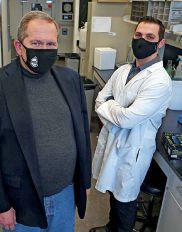


Five months into 2021 and so much has already happened in the world – including the world of business. Many of the topics that continue to make headlines are those that deal with health care and vaccine manufacturing and distribution.
As recent news attest, “America’s race against the virus and its variants now relies on our ability to flawlessly manufacture hundreds of millions of doses of the new mRNA vaccines – at warp speed,” writes Amy Feldman in an article in Forbes, noting that recent quality control issues at some plants are stark reminders that “manufacturing medicine is not easy.”
Closer to home, researchers at the University of North Dakota are excited about the recent discovery of two superantigens that, along with a “helper” molecule, have shown in testing to decrease tumors and dramatically lengthen the lives of mice with cancer.
What that means for humans is extraordinary to think about.
“It’s a promising way to induce the body’s own immune system to effectively fight tumors,” according to reporting by Sam Easter, who dives further into Prairie Business’s cover story about clinical trials being done in the region.

Other trend stories in the May issue include what some of the region’s insurance experts are noticing in the insurance market, namely the increasing popularity of cyber liability, in part because so many employees are working remotely; and what human resource experts are doing to keep employees engaged and feel like part of the team even while away from the office. Our friend Erica Johnsrud at Dale Carnegie of North Dakota piggy-backs off this latter story with a column about how companies can help make their workforce more agile in these stressful times.
She leads off her expert advice, writing: “In today’s ever-changing work environments, organizations must act on information quickly, make decisions, and implement change to meet the rapidly evolving requirements of customer and employee engagement.”
Stories about a soon-to-be graduate of North Dakota State College of Science, a peek inside the new offices at Enclave, and the plans of McGough Construction to expand its market reach are other stories readers will find within these pages.
And there’s more, of course.
It’s a good way to kick off the fifth month of 2021, a month that, in another vein, reminds some people of the impact pop culture has on society. There’s a fun saying by Star Wars fans when May rolls around: “May the Fourth be with you,” they say on May 4.
But there’s another saying, this one from Prairie Business, directed at its many friends across the region and one it wishes you all month long: “May your business be blessed.”
Until next time, Andrew Weeks
I look forward to hearing from you at aweeks@prairiebusinessmagazine.com or 701-780-1276.
PUBLISHER KORRIE WENZEL
AD DIRECTOR STACI LORD
EDITOR
ANDREW WEEKS
CIRCULATION MANAGER BETH BOHLMAN
LAYOUT DESIGN JAMIE
Grand Forks, ND 58203. Subscriptions are available free of charge. Back issue quantities are limited and subject to availability ($2/copy prepaid). The opinions of writers featured in Prairie Business are their own. Unsolicited manuscripts, photographs, artwork are encouraged but will not be returned without a self-addressed, stamped envelope.
SUBSCRIPTIONS
EAPC’sK-12EducationDesign Specialist ,SeanSugden,has completedthe NationalInstitute ofCrimePrevention’scourse on CrimePreventionThrough EnvironmentalDesign(CPTED) whichprovidesthein-depth trainingand toolsneeded to activelyapplydesignpractices proventoprevent andmitigate crimeacrossallinteriorand exteriorbuildingtypesandspaces.





When Ryan Onken flew to Arizona this spring, it was the first time he’d been on an airplane in more than a year.
Besides the mask-wearing on the plane, it didn’t seem like there was a pandemic at all. The airplane was packed with air travelers. He took it as a sign of good things to come. Maybe life is creeping back to a sense of normalcy.
But in his line of work – insurance – he continues to see the pandmeic’s effect on some businesses.
Onken is a commercial insurance adviser with Bell Insurance in Fargo, N.D., and the office in Arizona is one of its new footprints.



He recently spoke with Prairie Business and said he is noticing two trends: An overall hardening of the market and an increased interest in cyber liability coverage for businesses. The latter is due, at least in part, to more employees working remotely.
“It is very cyclical,” Onken said of the insurance market. “We’re probably at the peak of a hard market right now.”
That means a firming of the rates.
For about the past 14 consecutive quarters the industry has seen rate increases pretty much across the board, he said — from property and general management liabilities to cyber security liabilities. The twist is that short-term impacts of the pandemic caused businesses to be risk-averse. Owners were not taking a lot of risks because they were not sure how the pandemic would affect their company.
“But as the pandemic plays out and things open up … a lot of those write-downs that carriers had taken out are being put back; they’re
taking them out of liability and back into profitability,” he said.
Dawson Insurance’s Ryan Hoffman, managing director of its Fargo operations, explained it this way: “We’re in a hardening market where pricing and capacity of coverage have become challenging.”
Natural disasters, including hurricanes in Texas and wildfires in California as well as other events that cause property damage, have certainly “put pressure on the property and casualty market, causing an increase in premiums and reduction in terms.”
Marilyn Ternes, vice president of the Bismarck, N.D., branch of EMC Insurance, shared a similar perspective.
“It’s challenging,” she said. “The market is firming up with all of the natural disasters that have happened, and then the riots didn’t help matters. All of those things affect the bottom line. They affect the reinsurance companies, and when reinsurance companies are impacted that trickles down to the insurance companies as well.”
EMC sells its products solely through independent insurance agencies and not directly to individuals or businesses.
A hard market is “the upswing in a market cycle, when premiums increase and capacity for most types of insurance decreases,” according to Insurance Business. A hardening market can be caused by a number of factors, whereas a soft market “is characterized by low rates, high limits, flexible contracts, and high availability of coverage.”
“It ebbs and flows,” Hoffman said. “It is somewhat cyclical. We have soft market periods and hard market periods. Right now we’re in a hardening market, and that’s in addition to potential COVID impacts to certain businesses. The increase of cost to insure a business, in addition to the cost of labor, is all having an impact on some businesses, which makes it challenging for them to keep the doors open.”
Besides a hard market, it is hard for any business to have its systems compromised by devious means.
If a hacker infiltrates a system, it can wreak havoc on the company and cost a great deal of money to get back online in a secure environment. For those with proprietary brands, it can be devastating.
“There are a lot of stories out there right now with regard to hacks and security breaches and ransomware that has a lot of our businesses very concerned,” small business and big companies alike, Hoffman said. “Everyone has a stake in it.”
Once a system has been compromised, hackers have the ability to lock up servers and, as such, shut down production. One diabolical scheme is ransomware, through which a hacker is basically holding the system hostage until money is paid, often at great expense to the owner, to unlock the system.
“Basically, they can put everything in a business at a standstill,” Hoffman said, explaining that even if a business pays the ransom, which often is a hefty sum in and of itself, the owner then still has to figure out what went wrong with the system and replace the hardware and equipment.
“It can be very, very expensive to businesses,” he said, explaining that cyber liability insurance is just one means of managing the risk.
“What cyber liability does is it provides a response,” Hoffman said. A “forensics” team goes in to analyze the breach and any damage or compromised parts of the system, and if any information has been disseminated. It then works with the client for an appropriate response to the situation. Liability provides “coverage for that forensics piece to pay for ransomware demands, to pay for damaged equipment as a result of the hack, and to help businesses financially recover from the incident.”
While cyber liability is not anything new, it is a relatively underdeveloped market, according to Onken, of Bell Insurance. More businesses
are interested in having cyber insurance these days because more of their employees are working remotely.
Onken said the benefits of cyber insurance are the coverage it provides for first- and third-party damages and the forensic cost if a system was compromised.
“The first-party damages are the notification expenses,” he said. “There are rules and regulations that if you have a cyber breach, you have to notify everybody who is impacted by it. … There’s also going to be some computer forensic cost associated with it and you might have to rebuild your infrastructure or some data. So that’s the first-party coverage of a cyber policy, which is just really protecting you as a business.
“The second piece is the third-party liability side, where let’s say you’ve got some private information that gets leaked. Maybe it’s information in health care or it’s personal information, or it’s a patent or
corporate information; maybe you’re a lawyer or a vendor and you’re under a nondisclosure agreement. You can get sued for that financial damage. That would be covered underneath the third-party liability.”
Of note, Hoffman said the purchasing of insurance is only one way to manage the risk of cyber problems, just one part of a mitigation strategy. Organizations working with their in-house IT team or their IT provider to develop security measures to mitigate that exposure should be the first defense.
“You don’t fix it by buying insurance,” he said. “The biggest, the most important mitigation effort is for the security team to build a defense against an attack.”
Onken said not all insurance policies are created equal, and as trusted insurance advisers it is up to the insurance professional to make sure their clients know about cyber liability and what it protects and doesn’t protect.


He said nationally about 65% of businesses now buy cyber insurance “in some form or fashion.”
Ternes, of EMC, said it is always good for business owners to be open with their insurance agent, and never be afraid to ask questions as they arise. There is no cookie-cutter insurance answer for every business; it all depends on what the owner is seeking.
“There’s not one answer that would fit them all,” she said. “It might be that they have only one conversation and walk out the door with the policy. There are other times it may take several months to put something together, depending on the size of the business. .... It could take hours to months.”
na nc ia l insecu rity ca n lead to st ress, lowered produc tivity, and ot her issues foryour employees. Introduc ing MY AL ERUS, an on line financial gu idance tool that ca n help your employees ma ke better financial decisions. Whet her it is savi ng for reti rement, ma ki nga plan to reduce debt, or ma xi mi zi ng health savi ngs benefits— your employees ca n now ta ke cont rolof thei r financial futu re
In today’s ever-changing work environments, organizations must act on information quickly, make decisions, and implement change to meet the rapidly evolving requirements of customer and employee engagement.
Along with solid tools and processes, it takes the right combination of resilience, social intelligence and capacity for action, aligned with a common organizational purpose, to create a strong foundation for buy-in and change.
In a study done by Dale Carnegie and Associates, agile organizations have shifted focus to:
1. Maintain company culture.
2. Create a common goal of customer focused objectives.
3. Have a positive attitude.
Current circumstances aside, these focus areas have always been a part of the people and companies that are outpacing the competition.
Maintain Company Culture in a virtual World Culture is the personality of the company. A strong culture gives people a sense of belonging. Culture exists whether we do anything to build it or not.
Now more than ever we need a sense of connection in our teams. Here are a few tips based on our research and experience with clients:
· Identify the events and rituals you did “in person” and replicate them virtually
· Use physical props to connect when virtual
· Keep communication EXTRA-open
· Make your employees mental health and awareness a priority

· Keep celebrations, acknowledgments, and rewards going strong
It is the seemingly small touch points that show your appreciation for your team. As the newest member of the Dale Carnegie team, my welcome was filled with big celebration and little touches that introduced me to the culture and made me feel special. A small notebook in my favorite color, a sparkly bag that matches my aesthetic, and transparent leaders that are willing to share immediately upon my arrival. I feel seen, heard, and welcomed.
In what ways can you know your employees’ preferences and personalize their communication to make them feel connected? If your team is working remote, deliver something that is unique to them. Let them know the culture they have grown to love in-person is not dead. An easy way to start is to simply ask what it is they miss the most.
“The deepest principle in human nature is the craving to be appreciated.” – Dale Carnegie
A study done exploring high-performing teams confirmed the importance of having a strong customer focus. The research identified a subset of successful companies and examined how their attitudes and actions differed from the rest. One of the ways in which senior leaders at these winning organizations thought differently from
those in other companies was their strong emphasis on the customer.
On our team, our clients are the most important piece of our solutions. In fact, the client experience is so important that I was hired to focus on making sure our client facing communication is clear, effective, and purposeful. To dig in deeper, I have had the chance to sit in on meetings and learn more about the different opportunities that are available to each unique client. This has set the stage and precedent moving forward to think of the client first.
A clear customer-focused goal can provide company alignment, reason for change, efficiency, effectiveness, and empowerment. Not only are employees engaged in a common goal and sense of purpose, but customers also feel connected and valued.
“A clear focus on creating value for the customer provides a true north for everyone in the organization and supports agility in several ways.”
Once employees see the importance you set on the customer, echo those efforts internally. Treating your employees with the same value as you treat customers fosters a commitment to your organization and results in a high achieving team.
People with a positive outlook expect – and get – positive outcomes more often than those without it.
A positive culture helps people build their physical, intellectual, social and psychological resources. In the long run, these help people “bounce back” from adverse experiences, and in return supports risk-taking and makes it okay to fail. Research shows learning is facilitated when individuals possess a positive attitude toward new information and toward making mistakes.
Leaders can start by admitting their own mistakes – and they shouldn’t be quick to blame others. When employees feel comfortable with failure, your organization will see greater innovation, trust, speed, collaboration, and effective change management.
Dale Carnegie Principal #1: “Don’t Criticize, Condemn or Complain.”
The foundations for agility are at the heart of Dale Carnegie’s approach to relationships and the interpersonal skills he began teaching decades ago.
To learn more about how Dale Carnegie Training can help you strengthen the foundations of agility in your people and organizations in North Dakota and Minnesota, visit http://northdakota.dalecarnegie.com




Throughout our region, students are embracing a local, innovative, one-of-a-kind banking experience that’s creating a better way of life. It’s banking done differently, and for students and parents, it’s banking done right.
Gate City Bank’s Totally FREE1 Checking is no gimmick. It’s uniquely designed to help students succeed in the real world. From children to young adults, more students are starting to notice the long-term benefits of this up-and-coming banking option, and there are many reasons why.
To start, imagine banking with no fees,1 no minimum balance and FREE ATMs – worldwide. (Gate City Bank has saved customers more than $43 million in ATM fees.) But that’s just the tip of the iceberg. The truth is, students can start living their best financial life today, and getting set up is quick and easy.
“For the past 98 years, Gate City Bank has constantly innovated and created a better way of life for our customers and communities,” says Kristi Persons, Senior Vice President of Retail Banking. “Our industry experts have accomplished this by delivering options like Totally FREE1 Checking –paired with FREE financial education and more – while greatly improving the financial wellbeing of students.”
In today’s busy world, parents have enough worries, and setting a child up for financial success shouldn’t be one of them. That’s why so many parents are signing their kids up for Totally FREE1 Checking at Gate City Bank.
Totally FREE1 Checking helps parents monitor their kids’ spending activity and encourages education regarding security and responsibility with finances.
With this innovative checking account option, parents can take the following actions:
Monitor the Account: Enjoy Gate City Bank’s easy-to-use mobile app.
Keep Kids Safeguarded: Receive fraud protection with real-time alerts.
Embrace Financial Education: Access fun learning opportunities.
Practice Money Management: Help kids easily manage their finances.
Set Limits: Pre-determine spending caps for your kids’ debit cards.
Have Control: Easily turn the debit card on or off from the mobile app.
From setting kids up with their first checking account to preparing teens for higher education, Gate City Bank’s Totally FREE1 Checking is uniquely designed to prepare students for long-term financial success.
In addition to no fees,1 no minimum balance and FREE ATMs, students are loving all the bonus FREEs that come with choosing Gate City Bank. Online and mobile banking, accompanied by a convenient mobile app that makes mobile deposits and managing money incredibly easy, is among the student-friendly perks.
Additionally, Gate City Bank’s helpful money management tool allows students to determine financial goals, budget smoothly and set up text and email alerts to stay on top of finances.












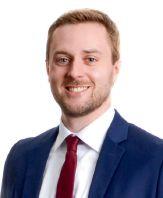
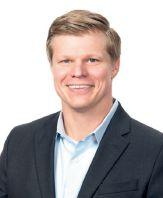
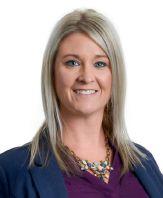
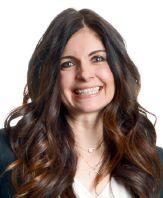
EideBaillywouldlike to congratulate our newPartnersinthe upperMidwest. Theirdedication to the firmandour communitiesinspireusevery day.
EideBaillywouldlike to congratulate our newPartnersinthe upperMidwest. Theirdedication to the firmandour communitiesinspireusevery day.
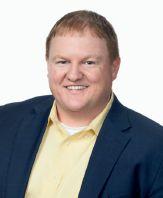
Wh at inspires you, inspires us. eidebailly.com
Wh at inspires you, inspires us. eidebailly.com


 Kelli Roberts Aberdeen
Elise Kainz Fargo
Alexis Odden Fargo
LukeJohnson Sioux Falls
Dustin Long Fargo
Mandy Sutton Sioux Falls
BrettJohnson Fargo
Nick Crank Sioux Falls
Kelli Roberts Aberdeen
Elise Kainz Fargo
Alexis Odden Fargo
LukeJohnson Sioux Falls
Dustin Long Fargo
Mandy Sutton Sioux Falls
BrettJohnson Fargo
Nick Crank Sioux Falls
Kelli Roberts Aberdeen
Elise Kainz Fargo
Alexis Odden Fargo
LukeJohnson Sioux Falls
Dustin Long Fargo
Mandy Sutton Sioux Falls
BrettJohnson Fargo
Nick Crank Sioux Falls
Kelli Roberts Aberdeen
Elise Kainz Fargo
Alexis Odden Fargo
LukeJohnson Sioux Falls
Dustin Long Fargo
Mandy Sutton Sioux Falls
BrettJohnson Fargo
Nick Crank Sioux Falls
Hindsightis20/20andaswelooktothenewyearand reflectbackonthepastyear,weknowwearefacedwithsome new realities.AtMarsh&McLennanAgencywestayclosetothecurrentbusinesstrendsandadvancementsinthe healthcaredeliverysystemandhowthatimpactsemployers. We believe2021willbringfivenew realities.Belowwe diveintoeachofthose realitiesthatcameintofocusduring2020andwhichwebelievewillinfluenceworkforceplans andpoliciesfortheforeseeablefuture.
Hindsightis20/20andaswelooktothenewyearand reflectbackonthepastyear,weknowwearefacedwithsome new realities.AtMarsh&McLennanAgencywestayclosetothecurrentbusinesstrendsandadvancementsinthe healthcaredeliverysystemandhowthatimpactsemployers. We believe2021willbringfivenew realities.Belowwe diveintoeachofthose realitiesthatcameintofocusduring2020andwhichwebelievewillinfluenceworkforceplans andpoliciesfortheforeseeablefuture.
The5NewRealities:
Ashealthplancostscontinuetooutpaceinflation,strategiesshifttoward costcontainment.
Uncertaintyappearstobeatanall-timehigh—abouttheACA,aboutCOVIDandvaccinations,aboutaccessto healthcareandaffordability.Whataresomesmartwaysforemployerstocontainhealthcarecosts?Howcan technologyanddigitalhealthbeusedtoimproveaccessanddrivedowncosts?
Ashealthplancostscontinuetooutpaceinflation,strategiesshifttoward costcontainment. Uncertaintyappearstobeatanall-timehigh—abouttheACA,aboutCOVIDandvaccinations,aboutaccessto healthcareandaffordability.Whataresomesmartwaysforemployerstocontainhealthcarecosts?Howcan technologyanddigitalhealthbeusedtoimproveaccessanddrivedowncosts?
HRistakingonanew,digitallytransformed role.
HRistakingonanew,digitallytransformed role.
Our researchfoundthatmostemployersadmittheyarenottakingenoughadvantageoftechnologytoimprove howtheiremployeesinterfacewithHR.HowcanorganizationsintegratenewtechnologyintotheirHRoperations tosavetimeandmoney?Howaredigitalappsandplatformstransforminghowbenefitssolutionsaredelivered?
Our researchfoundthatmostemployersadmittheyarenottakingenoughadvantageoftechnologytoimprove howtheiremployeesinterfacewithHR.HowcanorganizationsintegratenewtechnologyintotheirHRoperations tosavetimeandmoney?Howaredigitalappsandplatformstransforminghowbenefitssolutionsaredelivered?
Employee well-beingandinclusionhave neverbeenmoreimportant. Foryears,we’veknownthatmentalhealthwasapublichealthconcern. Today,themajorityofemployers haveplanstoaddressmentalhealthstigmaandimproveaccesstobehavioralhealthservices.Whatare recommendationsforaddressing “work-from-home(WFH)fatigue”, whereshouldemployersinvesttheir resourcestoimprove “totalworkerwell-being”,andhowdoesthecurrentculturesupporta “supportiveand inclusive”mindset?
Employee well-beingandinclusionhave neverbeenmoreimportant. Foryears,we’veknownthatmentalhealthwasapublichealthconcern. Today,themajorityofemployers haveplanstoaddressmentalhealthstigmaandimproveaccesstobehavioralhealthservices.Whatare recommendationsforaddressing “work-from-home(WFH)fatigue”, whereshouldemployersinvesttheir resourcestoimprove “totalworkerwell-being”,andhowdoesthecurrentculturesupporta “supportiveand inclusive”mindset?
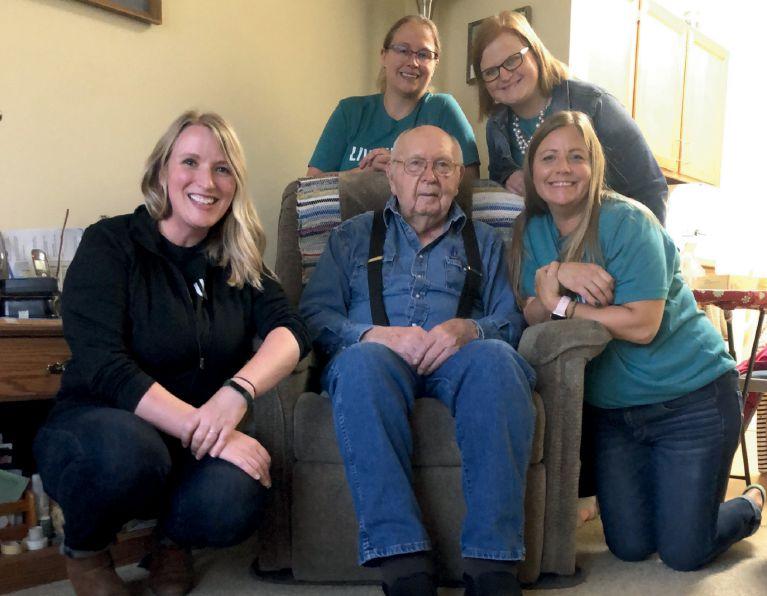
Flexibilityis no longer a perk—It’s an expectation.
ManyemployersshiftedtoWFHin responsetothepandemic,andthistrendmaybeheretostay.Whataresome “bestpractices”employersaroundthecountryareimplementingtoaddressthis?CouldWFHbepermanentin somecases?Ifso,whatshouldemployersbeconsideringastheyadjusttheirworkforceplansandpolicies?
Flexibilityis no longer a perk—It’s an expectation. ManyemployersshiftedtoWFHin responsetothepandemic,andthistrendmaybeheretostay.Whataresome “bestpractices”employersaroundthecountryareimplementingtoaddressthis?CouldWFHbepermanentin somecases?Ifso,whatshouldemployersbeconsideringastheyadjusttheirworkforceplansandpolicies?
The changing political landscape impactsthehealthcare market.
The changing political landscape impactsthehealthcare market.
UnderPresidentBiden,itisstilluncertainwhatmightchangeandwhenwith regardtoACA,COVID-19mitigation, andprescriptiondrugs,tonameafew. To getbeyondconjecture,whatshouldemployersbefocusedonasthey buildtheirhealthcareplansandpoliciesfor2021andbeyond?
UnderPresidentBiden,itisstilluncertainwhatmightchangeandwhenwith regardtoACA,COVID-19mitigation, andprescriptiondrugs,tonameafew. To getbeyondconjecture,whatshouldemployersbefocusedonasthey buildtheirhealthcareplansandpoliciesfor2021andbeyond?
Eachorganizationisuniqueandweknowonerealitymayhaveadifferentorstrongerimpactbasedonindustryor size.ThisiswhereMarsh&McLennanAgencycansupportyourbusiness.Ourriskand employeehealth & benefits consulting teamsreviewtheseshiftsandoffertargetedstrategicsupporttohelpsuccessfullynavigatethesenew realities.
Eachorganizationisuniqueandweknowonerealitymayhaveadifferentorstrongerimpactbasedonindustryor size.ThisiswhereMarsh&McLennanAgencycansupportyourbusiness.Ourriskand employeehealth & benefits consulting teamsreviewtheseshiftsandoffertargetedstrategicsupporttohelpsuccessfullynavigatethesenew realities.
Tounderstandthesenewrealitiesclosertoyourorganization,reachouttoAbbeyVanderwerf,Vice President, EmployeeHealth & Benefits, at+16053102790tostartaconversationorvisit mma.marshmma.com/realities.
Tounderstandthesenewrealitiesclosertoyourorganization,reachouttoAbbeyVanderwerf,Vice President, EmployeeHealth & Benefits, at+16053102790tostartaconversationorvisit mma.marshmma.com/realities.
WE’REHEREFOR YO U
WE’REHEREFOR YO U
BUSINESSINSURANCE
BUSINESSINSURANCE
EMPLOYEEHEALTH&BENEFITS
EMPLOYEEHEALTH&BENEFITS

PRIVATECLIENTSERVICES
PRIVATECLIENTSERVICES
RETIREMENTSERVICES
RETIREMENTSERVICES

SURETY
SURETY
EXECUTIVEBENEFITS
EXECUTIVEBENEFITS
RISKMANAGEMENT
RISKMANAGEMENT
CYBERLIABILITY
CYBERLIABILITY
EXECUTIVELIABILITY
EXECUTIVELIABILITY
TECHNOLOGY TOOLS
TECHNOLOGY TOOLS
Fa rg o,ND +1 7012373311
Fa rg o,ND +1 7012373311
Sioux Falls,SD
Sioux Falls,SD
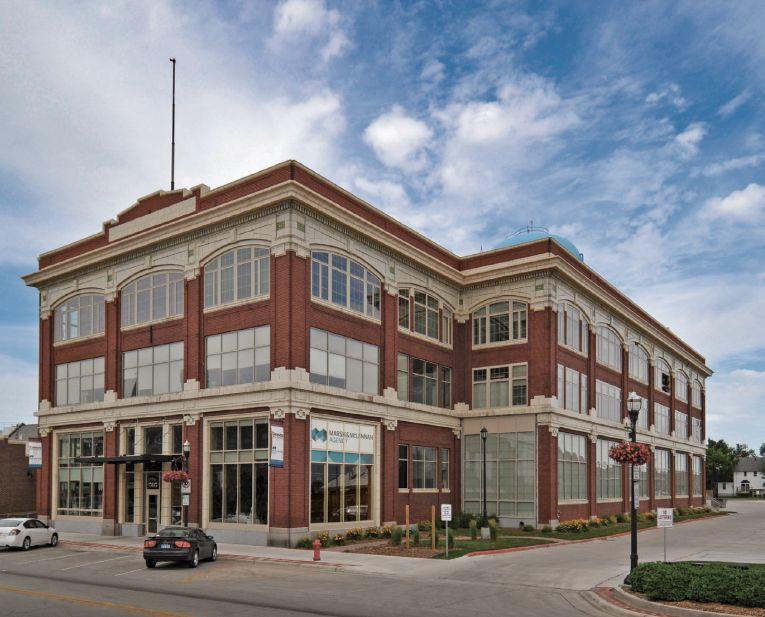
+16053393874
+16053393874
 By Andrew Weeks
By Andrew Weeks
Andrew Bouressa might have started college a little later than what others normally do, but he knows he is where he needs to be at this stage of his life.
That place is North Dakota State College of Science, where he is seeking a degree in HVAC/R — or heating, ventilation, air condition and refrigeration.
When he graduates this May he will be trained to install, maintain and repair indoor climate-control systems.
Bouressa, 28, didn’t always know what he wanted to do for a career, but time and experience taught him this pursuit was a logical choice for him.
“I was already in a trade after failing to go to college when I was younger,” he said. “I walked into the manufacturing field and worked there for five or six years and it just got to a point where I either had to commit to that field or move along. I decided I was going to take my chances of going someplace else and doing something different.”
Bouressa, originally from Alexandria, Minn., moved to Breckenridge, Minn., when his wife took a job at Breckenridge High School. It was closer to NDSCS, which turned out to be a boon for his schooling opportunities. He went online and found what he was looking for.
Breckeniridge is within an hour’s drive of NDSU.
He said he wanted to pursue something that would allow him to use critical thinking skills but also work independently. He also wanted a job that paid decently, which would allow him to meet his financial obligations and help make getting up for work in the mornings easier.
“I was looking for something that had a wide variety of niches to fall into,” he said. “This field is so diverse and that’s attractive to me.”
He started his official schooling in fall 2019, and is excited to graduate in May. The future looks much brighter than it did before he started school.
“After getting into the program I realized just how big the HVAC/R industry is. There are a lot of jobs that fall under that umbrella,” he said. “There are companies that strictly do commercial refrigeration for grocery stores, there’s industrial install services and residential install services; there’s air balancing. We’re just learning about hydronic systems. There are certain companies that do building automation systems. … There are just a lot of things you can do.”
Something else that makes his graduation all the more exciting for him is that Bouressa already has been offered a job, in which he will get a mix of hands-on installation and servicing experience. He said he’s still planning his long-term goals.
“There are a lot of opportunities and things that I could do and that’s
what makes it exciting,” he said. “I don’t have to decide right now. I can figure out what I like, and then move forward into those positions.”
His experience at NDSCS has been positive, and he said instructors have been especially helpful, as have members of the school’s financial aid department.
“The staff is really supportive,” he said. “If you have questions, they’re really good about getting you that information. They don’t come down on you for not knowing something that they think maybe you should already know. They’re all about the experience for you and supporting students. … Compared to some other folks I’ve talked to coming out of other technical programs, it seems like ours has a lot more depth to the concepts that we go over.”
His advice for other students considering pursuing the same field: “I would have to say, master the basics. That’s probably the most important thing, at least in our program. Most of the complicated stuff can be shaved back down to the basics. If you have a really good base knowledge of how things are supposed to go, you’re going to be able to work forward from that point. Things don’t get too complicated as long as you have that base understanding.”
Bouressa is already talking like a pro, someone who’s been in the field for at least a few years. He said he’s learned better what his strengths and weaknesses are and he has learned it takes time to hone a craft.
“All these concepts were new to me walking in the door. I didn’t know anything about electricity. I didn’t know anything about the refrigeration cycle,” he said. “That’s why I said that base knowledge is crucial, because you can’t really move beyond that until you understand it. For me it was learning new terms and new concepts.”
The soon-to-be graduate didn’t cut any corners when he said what he is most excited about in the near term: a paycheck. But he also is excited about something with deeper meaning.
“I want to be an expert in the trade,” he said. “I want to be well-rounded, to learn the trade, and be a real tradesman. I want to be an expert in my field and to keep learning, engaging in those training opportunities and growth opportunities.”


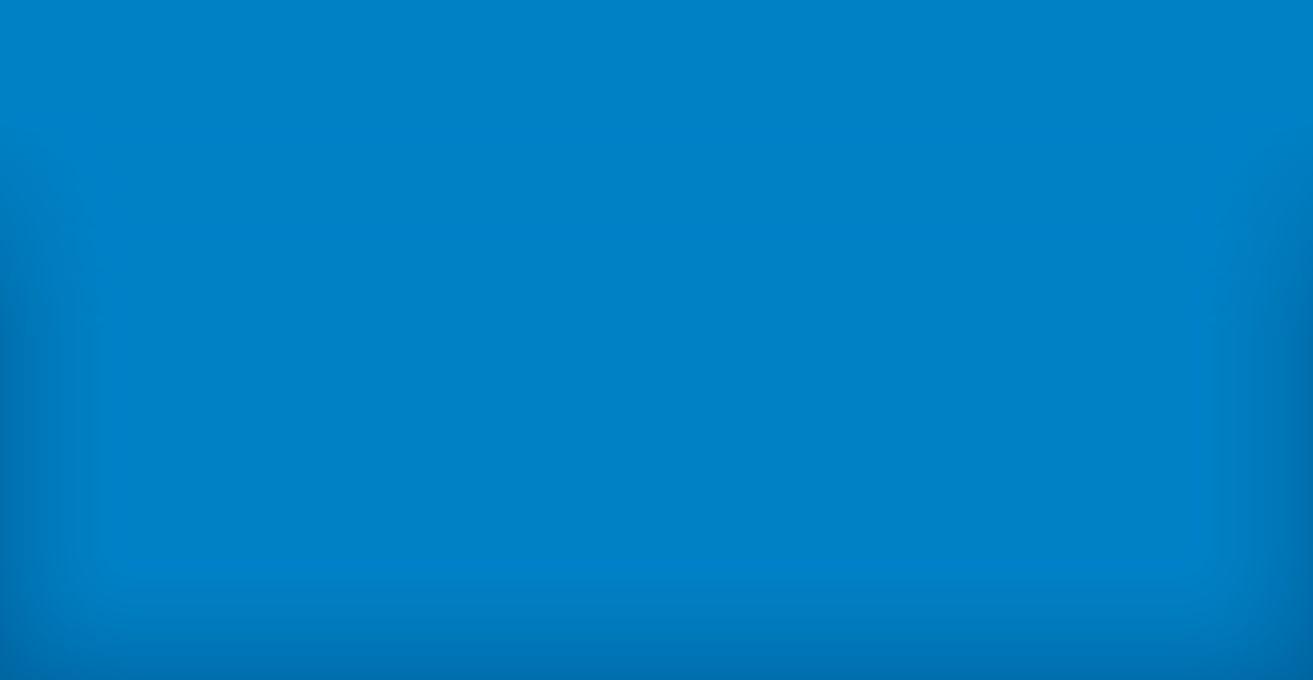
For years, medical researchers at the University of North Dakota and beyond have been working on how to fight cancer more effectively with “superantigens” – substances that produce a powerful immune response in the body.

And this year, scientists are especially excited about a recent discovery: two superantigens, that, along with a “helper” molecule, decrease tumors and dramatically lengthen the lives of mice with cancer – and crucially, do it without the negative side effects that often come with superantigen treatments.
It’s a promising way to induce the body’s own immune system to effectively fight tumors, and medical researchers are excited for clinical trials that could begin as soon as late summer.
“From a human perspective, we gave it to a mouse when the mouse was a teenager – six to eight weeks of mouse age,” said Dr. David Bradley, a UND associate professor of biomedical sciences and a lead researcher on the project. The result, he said, was decades of survival, on to as much as 60 or 80 human years.
Bradley said research even showed that mice have lasting protection against new tumors. It’s an exciting finding, and it comes along at a pivotal time – just as the COVID pandemic has drawn enormous attention to the power and promise that medical research holds. For
a lot of professionals close to the field, there’s been a sudden rush of public interest – and hope – for what the future could bring.
“We’ve seen the advancement in medicine of so many things that happened so quickly for us throughout this COVID year,” said Kari Jensen, who oversees clinical research at Altru Health System. “We’ve seen how fast we can make changes when we want to, and we benefited from advances in clinical research.”
Jensen points out the most obvious recent development: COVID vaccines that were developed and began distribution within a year of the pandemic shutting down daily American life. But she also points out developments in convalescent plasma treatments spearheaded at Mayo Clinic in Rochester, Minn.
That enthusiasm is exciting. But it comes after a mixed year in medical research; especially during the beginning of COVID-19, the virus made many kinds of studies difficult. Health Affairs reported in July that, as of last May, “nearly 100 companies and 240 trials” had seen “disruptions” in their clinical trial research. That’s even true of big pharma companies like Merck or Pfizer, the report said, all of whom had to contend with a life – and a research environment – reoriented around the virus.
In the upper Midwest, the story was similar. Lora Black, Sanford Health’s senior director of clinical research, said the medical group scrambled to make sure patients still had access to trial treatments — which are often important parts of their care.

“A lot of it really took advantage of technology,” she said, like iPads or videoconferencing technology or other kinds of remote tech that would allow patients to give their consent for trials and for researchers to keep conducting them – all while keeping face-to-face exposure to a minimum.
“It was a lot of, ‘How are we going to do this?’” Black said. “And it was working with regulators, the (review boards) and all our chief collaborators to figure out what’s going to work so we can keep this all moving.”
The boost in interest doesn’t necessarily mean a renaissance in medical treatments; research is hard and doesn’t always yield the results that medical scientists are hoping for. One example is the convalescent plasma treatments for COVID that garnered so much initial
interest last year. After a surge in attention and government funding – and alongside the distribution of vaccines – Kaiser Health News reports that researchers’ results now leave them far less enthusiastic about the treatment’s prospects.
And Dr. David Terman, an adjunct professor at UND’s medical school – and another leading researcher on the superantigen study – still harbors skepticism about the momentum that COVID might lend researchers. There might be more funding to explore COVID treatments, sure, but that also might come with its own downsides.
“Most people and politicians are unaware of how basic science discoveries from one field may apply to others,” Terman wrote in an email. “Certainly, there will be increased financial support for research targeting COVID treatments. This is likely to dilute and dampen monetary support for cancer research and medical research generally.”
But for now, many medical experts remain excited. There’s a big world out there – and, for the moment, its eyes are fixed on the promise of clinical research. With a little luck, that means volunteers for studies show up in larger and larger numbers.
“I think they understand the only way we move science forward is through clinical trials,” Black said. “And the only way that we can complete those clinical trials is if we have volunteers.”
It’s a different kind of trend.
Many employees like working remotely, but not all of them do. For some, the isolation has made them feel forgotten and lonely. Some employees are finding a new type of burnout.
“Call it a pandemic of worker malaise,” reads an article by the Wall Street Journal. “Thanks to Covid-19 an increasing number of people feel disengaged from their jobs. Working from home, interacting via video, and worrying about our health and the economy are all taking a toll.”
More than a year into the pandemic, roughly six in 10 people are still working remotely, according to a new Gallup poll. The pandemic has taught many individuals that they can be as productive, if not more so, working remotely. Others, who might find their home environment distracting or feel a disconnect from their colleagues, not so much. Gallup found that about half of those who work remotely have said the disruption to their routine has made their job harder to do. Some employees said their managers do not pay as much attention to them as they did pre-pandemic. Now, only four people in 10 say their employer communicates clearly with them and keeps them informed. The same number — only four in 10 — said they feel their employer cares about their wellbeing.
Diane Chretien, director of human resources at Obernel, headquartered in Minneapolis but which has offices across Minnesota and in North Dakota, said communication between management and staff is paramount to the company’s success.
“It’s No. 1,” she said. “Communication is everything and we work to continuously improve all aspects throughout our company.”
Prairie Business reached out to several companies to see how they help their employees stay connected at a time when the office setting, at least for some companies, might be a thing of the past. These leaders say besides communication, their companies have other routines and offerings in place that help employees stay engaged and feel like part of the team.
The same questions were asked of three companies to see how similar or different their approaches might be:
all employee-owners in constructing a united vision of JLG’s future. Onboarding processes and new staff mentoring were most impacted by the remote connection, and so we created more virtual onboarding sessions, social engagements, and tethered individuals together to establish deeper relationships.
Angela Bolonchuk, director of human resources, JLG Architects, Grand Forks, N.D.

Healthcare competencies are already prescriptive, so whether it’s a pandemic or not, we’ve continued our competency routine. However, we’ve prioritized some competencies, based on needs during the pandemic. For example, our amazing Environmental Services team accepted the challenge of ensuring our spaces were clean and disinfected as well as completing a special certification for health care EVS workers. With few exceptions, most of our workforce did not work from home, so this was not an issue for us.
Mike Delfs, president & CEO, Jamestown Regional Medical Center, Jamestown, N.D.
The majority of our workforce has been working from home since March 2020. Our use of virtual meeting tools, especially Teams, has skyrocketed. Employees have adapted to the shift in communication style wonderfully. Our IT department has been instrumental in assisting everyone to a virtual work environment quickly and seamlessly. Our focus now, beginning in 2021, is to get back to helping employees learn, grow, and develop in their roles and define their career path.
Diane Chretien, director of Human Resources, Obernel, Minneapolis.
What has the company
to help build competencies among employees during the pandemic, especially among those who may work remotely?
JLG Architects is no stranger to the virtual environment. Working virtually, we operated as one firm across 11 offices before the pandemic, regularly holding company-wide training sessions. We live an open book management philosophy and, as a 100% employee-owned firm, we meet twice a month to cover financial performance and a training topic to dive deeper into operations.
We held our strategic planning event virtually in 2020 to engage
JLG Architects offers a flexible work environment; however, during the pandemic we encouraged employees to work outside our normal core hours to provide additional work-life balance. We held “A Breath of Fresh Air” 50-day event to celebrate Earth Day by focusing on health, wellness, and resilience through daily emails, suggested activities, and events. Also during the pandemic, we leveraged our Employee Assistance Program (EAP) for training and social engagements, as well as asked a JLGer to a virtual yoga session. Regular communication to ease staffs’ mind on the status of the firm, managing workload closely, and promoting regular check-ins were also key components to our strategy.
Angela Bolonchuk, JLG ArchitectsBusiness leaders share human resource perspectives how to keep employees engaged and part of the team
Yes, several. We facilitated morale boosters including opportunities to recognize and reward teammates for legendary work. One example is the employee care kits. Employees nominated each other for going above and beyond. As recognition, we delivered care kits which included treats, chapsticks, lotions and other items of comfort.
Our Employee Engagement Committee sponsored several special treats including popcorn in the cafeteria and beverages in the hospital coffee shop.

Our chaplain filmed prayers which we shared to the employee intranet. She also offered private counselling sessions by appointment.
Employees could apply for monetary assistance from the Employee Support Fund. This fund offers grants of up to $250 to help our teammates through times of hardship including illness, emergencies, etc.

Even though it’s no longer mandatory, JRMC continues to offer 10-days of sick time if an employee is diagnosed with COVID (this originated from the Family First Coronavirus Response Act).
Mike Delfs, Jamestown Regional Medical Center
We have a flexible work environment and have encouraged employees to unplug and walk away from their computers as needed and at the end of the workday. This has been especially challenging when working from home and your temporary workstation is set up in the living room. It is easy to be drawn back in to do one more task or respond to one more email. Early on in the pandemic we developed two new pages on our intranet for employees to use. One with videos, articles, and other resources for personal development and mental health support. The other was a page specific to the COVID
pandemic with communications and information about our response to the situation.
Diane Chretien, Obernel


Communication supplies a high level of understanding of where the firm is going for all leaders to rally around. This clear vision is the guidepost for making decisions in our daily work. To gain that clarity, it takes consistent, clear communication. It also requires listening to understand where individuals are at and what needs communicating. When leaders are not in alignment, or are not hearing employees’ voices, the work environment breaks down, is disjointed, and does not foster a team environment.
Angela Bolonchuk, JLG ArchitectsCommunication is the most important role we have, because of the crisis. We identified the value of communication early on, which is why a public information officer sits on the incident command team. It’s important to know though, that communication and investing in good culture is just as important before a crisis as it is during. The way we communicated during the pandemic was similar to how we communicated before, simply modified.
Examples: Wins! We begin every meeting with communicating what’s going well. Employees can also submit wins to the Win Bin on our Employee Intranet.
Quarterly forums: like meetings, we begin these with a win. Because of the pandemic, we made these meetings virtual.
continued on page 28
continued from page 27
Thank you cards, Difference Leaves: employees can thank each other or anyone (patients, visitors, vendors) with JRMC-branded thank you cards and Difference Leaves. These are available at any time and employees are encouraged to use their work time to complete them. Inspiring gratitude is an effective way to reward and recognize exceptional work.
Ask Admin: employees can anonymously ask questions or post concerns to our employee intranet site.
Mike Delfs, Jamestown Regional Medical CenterIt’s No. 1, it’s huge. Communication is everything and we work to continuously improve all aspects throughout our company. We are working with managers to have richer, deeper conversations with their direct reports. These check-in conversations happen three times per year and are focused on the employee’s wellbeing and development. We want employees to feel empowered to speak up for themselves and trust that their manager will hear them. The check-in is also an opportunity for managers to recognize employees for their accomplishments.
Diane Chretien, ObernelWhat resources does the company offer for employees who may be struggling emotionally because of the pandemic or for other reasons?
We offered our Employee Assistance Program, well-being seminars, workplace flexibility, and the FFCRA benefits. We engaged our career advisors in regular employee check-ins and held virtual social events to bring employees together. Uncertainty can be emotionally challenging for individuals, and so we held frequent communication to support business continuity and provide business updates to reassure JLGers. As a well-run business we focused to sustain our firm without layoffs or furloughs, and leveraged employee bandwidth
toward strategic initiatives. This past year has impacted JLGers very deeply. We consider ourselves a family and pull together to support individuals when they are struggling. We shift workload to ensure employees can focus on what is important – themselves and their family – and to
restoration.
Angela Bolonchuk, JLG ArchitectsAs mentioned before, we offer the Employee Support Fund, 10-days of sick time if diagnosed with COVID (family first act), and chaplaincy services. In addition, we partner with The Village for Family Services Center to offer counselling services to employees at no cost to them.
Mike Delfs, Jamestown Regional Medical Center
We strive to support employees at all times, beyond the pandemic, by offering flexible work hours, an employee assistance program covering counseling sessions, and paid time off.
Diane Chretien, Obernel
Often HR is viewed as the rule makers or paper pushers – when, in fact, we serve both the employee and the employer. We truly care about our JLGers, their mental health, families, success, passion, and goals. We are a strategic partner to aid them in living out their best selves while pushing our firm to also live into its greatness. It is a complicated middle ground that requires empathy.
Angela Bolonchuk, JLG Architects
HR played an important role during this pandemic. The department continued its current functions including payroll, hiring, terminating, etc., PLUS the team took on the challenging tasks of supporting employees and departments through unexpected and extended illnesses. We are grateful for them.
Mike Delfs, Jamestown Regional Medical Center
We are not solely focused on recruitment and benefits, policies and procedures. We exist to partner with business leaders to help move the company forward for the future. We are experts on talent management and organizational development, and should be seen as a valuable resource for business leaders, managers, and employees alike.
Diane Chretien, Obernel
 By Andrew Weeks
By Andrew Weeks
SIOUX FALLS, S.D. • McGough Construction, a company headquartered in St. Paul, Minn., and with offices located in North Dakota, Iowa and Texas, is expanding into South Dakota with a new office to open in Sioux Falls.

The company also has expanded its presence in North Dakota with a new office in Bismarck.

The Bismarck office, a leased onefloor space in the Wells Fargo building on East Broadway in downtown, will open May 3, according to Ryan Goodsen, vice president of regional operations, who will lead the new office. The 2,600 square-foot space will initially house three to four full-time staff members but Goodsen plans to grow the team.
continued on page 30

continued from page 29
“The space will have multiple meeting rooms with full virtual meeting capabilities,” he said. “This office will be supported by the same full company resources our other regional office locations provide.”
Goodsen has been with McGough for 13 years, working with operations throughout the Dakotas and Minnesota. He leads an experienced team of construction professionals born and raised in the region.
Founded in the 1950s, McGough made a name for itself with the development of collaborative delivery methods and the execution of complex projects. The family-owned company has continued to build on that legacy, amassing an extensive portfolio of experience, including projects in health care, corporate office, higher education, performing arts, hospitality, research/laboratory, and industrial projects around the country.
A project called Block 9 has transformed the skyline of downtown Fargo. The Terex Manufacturing project in Watertown, S.D., won a 2020 ENR Best Project Award.

McGough has completed projects for organizations in the Dakotas, such as Sanford Health, University of North Dakota, North Dakota State University in North Dakota and Prairie Lakes Healthcare, also in Watertown.
“Our strong portfolio of successful projects throughout the region and our optimism about continued growth throughout the Dakotas
were key factors in our decision to solidify our presence in Bismarck,” he said. “We are looking forward to expanding our client relationships in the community and strengthening our existing relationships with owners, architects, local subcontractors and consultants.”
Clark Hagen, who has been with the company for about 20 years, will take charge of the Sioux Falls office. He currently is located in Fargo, but plans to move to South Dakota before the new office opens in June.

The 3,000 square-foot space his team will occupy also is located in that city’s downtown – a perfect location because it is in easy access to architect and design firms in the area, he said.
Hagen said the company is trying something different with the Sioux Falls office: it will contain 100 square-foot, pre-built and self-containing pods.
“This really is an open office concept,” he said. “We have our formal office, but then we’ll have these smaller breakout pods like little huddle rooms that staff can go into for a private call or if they
have to do a video session or something like that. … It’s something a little different, but we figured we’d try it out, see how they work for us. If we like it, we can bring the concept to other locations. If we grow out of our space in Sioux Falls and need to relocate to a larger space, that’s a piece of furniture, essentially, that can come with us.”
Hagen said he is most excited about building his team and knowing that McGough continues to expand in the region. Noting the success the company has had with its Fargo office, he said Sioux Falls has a similar vibe that he believes foretells of future success in the South Dakota market.


“We’re really excited about that,” he said. “We’ve proposed projects over the years (in South Dakota) and we’ve always felt that to have
continued success we really needed an official location in South Dakota. We’re coming off of the heels of our success with Prairie Lakes Healthcare in Waterdown.”
Hagen, who said his team will primarily serve clients within a twohours radius of the office location, is excited about being part of downtown Sioux Falls.

“We’ve had success in other communities that, if we’re downtown, a part of that community overall has been successful, whether it’s in Rochester, Duluth, in Iowa or in Fargo,” he said. “The designers that we partner with, the architects and engineers, are all within walking distance of our office. That’s pretty important when, just going to lunch or for an afternoon walk, you can bump into somebody and have that quick conversation; it’s invaluable. I think about 90% of the design firms are within walking distance of downtown.”

Looking to the company’s future in South Dakota, he said: “I think in the near term there is the possibility of a Rapid City location.”


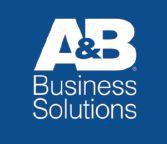

THESE IMAGES PROVIDE A PEEK INSIDE ENCLAVE’S NEW OFFICE BUILDING IN WEST FARGO, N.D. THE BUILDING HAS 63,000 SQUARE-FEET OF COMMERCIAL SPACE — 83,600 WITH THE SHARED AMENITY SPACES AND UNDERGROUND PARKING — AND AMONG ITS MANY FEATURES INCLUDES A LARGE SHARED CONFERENCE ROOM ON THE SECOND FLOOR THAT SUSPENDS OVER THE COMMUNITY LOBBY ON THE FIRST FLOOR. ‘THROUGHOUT THE PROCESS, WE WANTED TO CREATE A SPACE THAT WOULD MAXIMIZE WORKLIFE SATISFACTION FOR ALL,’ SAYS CO-FOUNDER AUSTIN MORRIS. ‘IT’S WHY WE CAREFULLY PLANNED OUR OFFICE TO HAVE WORKSTATIONS POSITIONED ON THE OUTSIDE PERIMETER, NEXT TO THE WINDOWS WITH AMPLE NATURAL LIGHT, AND OFFICES LOCATED IN THE CENTER OF THE BUILDING.’

WEST FARGO, N.D. • Austin Morris and Ben Meland are entrepreneurs of the finest sort. When they founded Enclave in 2011, they knew it would take time for it to become the fully integrated company that they had envisioned.
Ten years later, Enclave is just that – a fully integrated development, construction and property management organization with more than 130 team members.
Another sign of its success: The team recently moved into a new three-story office building in West Fargo. Construction of the 83,600 square-foot building started in June 2019, and the company moved into the new headquarters space in early March.

Previously, the team was housed in a suite in the Case Plaza building in downtown Fargo.

“When I first brought Ben to the space, he saw an eight-foot drop ceiling, blue and pink carpet and blue wallpaper,” Morris said. “We had a vision for the space and knew that like the environment we occupy now, we wanted the remodel to reflect the level of work and craftsmanship that our team is capable of. We completed our





remodel in November of 2016 and that space was home to us for the last five years.”
He and Meland are now excited for the next step in their adventure as business owners. They’re proud of their new space, and it’s understandable why.

“We had outgrown our space and were utilizing two separate suites in the Case Plaza building,” Meland said. “In looking at where we were and where we are going, our team’s size was definitely a motivating factor. We wanted a place to call home for the long-term that brought our entire team together under one roof to create a collaborative and dynamic work environment.
“Beyond space, we knew that we wanted to create an atmosphere for our team members and visitors unlike anything else in the region. We have an incredible team, and it was important for us to maximize the enjoyment of their work experience in a setting where they spend much of their time.”

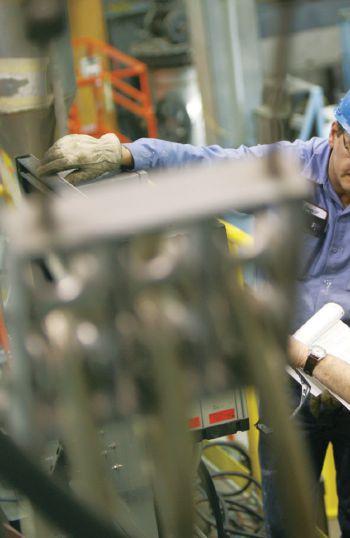

Meland: We carefully selected the location based on its history, riverscape setting and accessibility. The Rustad farmstead site dates back to 1877 and was a source of inspiration to both Austin and me. The agrarian landscape, Quonset and silo that remain today all influenced the design of our building.

Morris: As an organization, it was essential for us to maximize team member performance and well-being through the design of our space, and this location offered the perfect opportunity to do just that. We know that light, views of nature and color all impact a person’s mood and creativity. With the riverscape setting being a source of inspiration, emphasizing the natural setting’s beauty was always a cornerstone for us.
continued on page 35
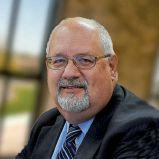
SIOUX FALLS, S.D. • JLG Architects has welcomed retired Harrisburg School District Superintendent Jim Holbeck to the company’s K-12 education architecture studio. As an educational expert with JLG, he will be working with regional districts to prioritize and identify education modes and learning strategies and understand their impact on building design.
With nearly 40 years of experience in K-12 education – 29 of those as a superintendent – Holbeck has helped plan, design, and manage a number of major academic- and safety-focused building projects, including a renovation to Harrisburg’s facilities, which were identified as some of the lowest per-square-foot construction costs in the state at the time due to efficiencies and practicalities. He holds an undergraduate degree from Northern State College, as well as two graduate degrees in school administration from the University of South Dakota.
Two join Flint Group’s office in Fargo FARGO, N.D. • Flint Group, a full-service marketing agency, has hired Riley Abeyesekera as a junior project manager and Ava Lipari as a social media coordinator.


Abeyesekera studied communication and management at Gustavus Adolphus College. Prior to joining Flint Group, she worked as a brand manager for a restaurant chain in the Twin Cities.
Lipari earned a bachelor’s degree in public relations with a mass communications minor from Minnesota State University Moorhead.

FARGO, N.D. • Daniel Hendrickx has joined Houston Engineering Inc.’s Fargo team as an Engineer I. He will provide engineering services to support clients’ municipal projects.
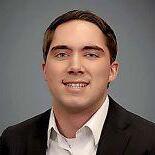

Originally from New York Mills, Minn., Hendrickx will graduate this May from North Dakota State University with a bachelor’s degree in civil engineering. He is a familiar face at HEI as he interned in the firm’s Minot office last year. Hunter Keller also has joined HEI as a human resource generalist. She will support all eight HEI office locations and assist the HR team with the recruitment process, onboarding activities, safety certifications, and updating employee records and internal web pages.
A native of Beulah, N.D., Keller will graduate in May from North Dakota State University with a bachelor’s degree in business administration. She previously interned at Doosan Bobcat in its HR department and worked in the NDSU Career and Advising Center.
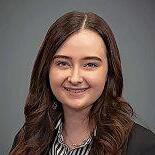
Melissa Van Der Stad joins Houston Engineering’s team as a communications assistant. She will be responsible for developing proposals, project reports, and presentations as well as assisting with various other marketing and communications tasks to support staff across the firm.
Originally from Park Rapids, Minn., Van Der Stad earned her bachelor’s degree in journalism with a minor in Hispanic studies from the University of Minnesota Duluth. In her previous position, she developed proposals and managed grants for a Fargo non-profit organization. In addition, she has written several articles and press releases.

continued from page 33
What are some of the features and amenities of the new building?
Morris: The building features floor-to-ceiling windows throughout and offers various community spaces designed to accommodate tenants, team members and guests. The building is unique in offering a change of scenery through niche work areas that provide both privacy and collaboration. The distinct design features and furnishings offer elements of surprise and delight around every corner.
Meland: On the second floor, we have a large shared conference room that suspends over the community lobby on the first floor. We’re in the process of adding a marketplace on second that will offer products similar to what you would find at a convenience store.
I think one of my favorite features is our gathering space on the west side of the building. Designed with our team in mind, we have a large conference space that opens to a break room with ample seating and provides direct access to an outdoor deck overlooking the river. It’s a place for our team members to gather, get to know each other, enjoy a beverage, and directly complements our culture of caring for one another.
Share something unique or exciting about the interior:
Morris: Throughout the process, we wanted to create a space that would maximize work-life satisfaction for all. It’s why we carefully planned our office to have workstations positioned on the outside perimeter, next to the windows with ample natural light, and offices located in the center of the building.
Meland: Our open workstation setting is complemented by a variety of independent working areas that offer privacy for phone calls and individual meetings, with huddle and conference rooms that are perfect for collaborating in groups of two to 12.

How many offices or departments does it feature?
Morris: Our space on the third floor is occupied by our development, construction and property management team members. KLJ Engineering occupies the first and part of the second floor, with additional space for lease on second. In total, we envision 300 Enclave being home to three-to-four tenants.
How many employees will work in the building?

Morris: We anticipate over 200 people will work out of 300 Enclave, once fully leased.
What are some plans to grow the company in the facility or to use existing space?
Meland: Currently, our space on the third floor offers room for additional team members. In the future, some rooms that are currently acting as small conference rooms could be made into offices. As part of planning our space, it was essential for us to have flexibility, knowing that we want to be
here for the next decade or longer, it’s a space that supports our future growth.
In a nutshell, what type of atmosphere do you hope this new office space provides for employees and clients who may visit?
Morris: In the end, we want team members, tenants and visitors to feel inspired by creating an atmosphere they haven’t experienced before. People spend a tremendous amount of life at their workplace, so designing a creative and thought-provoking environment was always the end goal. The building is a direct reflection of our team’s talents and in that regard, is a symbol of what Enclave is capable of as an organization. We’re extremely grateful and proud to be able to call 300 Enclave home.










Being employee-owned, being transparent, recognizing our employees, providing work-life balance, and listening to our employees — this is what we do to help motivate our employees to do their best work.
We are an employee-owned company. The ownership culture helps instill the importance of doing the best job you can because you know you are making a difference and you are directly impacting the bottom line. Our company is also as transparent as we can be regarding the financial performance of the company and what are our strategic goals. This not only helps motivate our team members but it also builds trust and increases morale. Recognizing our employees who go above and beyond in their job performance and with our clients is important. We give “kudos” to these employees at our quarterly company meetings.
In addition, we recognize the importance of work/life balance and have policies to promote this balance including flexible working hours and working remote. And finally, although employee engagement surveys are a new tool for our company, we use them to listen to what our employees would like to see improved, which increases motivation to do their best work.
Liberty Business Systems believes in nurturing our team members as a whole human being. Work-life balance is an outdated methodology. We believe in a blend. Specific items include Daily Goal Writing, Communication Training, Paid Volunteer Time and flexibility to live life on your terms, as long as we are being successful. We also have Minions all over our office to remind us to be HAPPY, which is a core value!
Shawn Peterson Chief Executive Officer Liberty Business Systems, Inc. Fargo, N.D.

One of the many ways NewKota motivates team members to do their best, is what we call our Safety First, Service Always incentives. The first of these two incentive-based programs are the monthly SFSA awards. NewKota has allocated $12,000 a year to each branch, to be given as cash rewards. Each month management picks a topic of focus such as dedication to safety, inventory management, onsite paperwork completion and organization, etc. An individual or whole crew who demonstrates excellence in that month’s topic, receives the cash award.
The second of these two incentive programs is the SFSA catalog, which is an incentive program that rewards employees for their daily dedication to safety. For each day worked on location with no incidents, accidents, or equipment damage they earn 1 point. Points accumulate until they have enough to purchase what they desire out of our NewKota approved catalog. Points get reset to zero if an incident occurs.
With these quality and safety-based incentive programs, our team members have shown great motivation to perform each task right the first time, every time.

 Quinlan Axtman US Safety Manager NewKota Minot, N.D.
Quinlan Axtman US Safety Manager NewKota Minot, N.D.

Concordia College faculty and staff are exemplary in their dedication and work ethic. We believe there are two major motivators that keep our employees at their best: mission and students. Concordia has a guiding mission and an aligned strategic plan that set the tone. Seeing this road map of where an organization intends to place time, resources, and effort is important in all industries; however, in higher education, it is a must to bring all areas of the college together.
In addition, nothing unites us like our students. Every college employee knows our mission is driven by preparing, mentoring, and sending out educated students who are ready to learn, work, and lead for the betterment of all. Keeping students at the center of all we do brings about this shared sense of purpose for every employee. Concordia employees know our true north is mission and people – and that is when our best work shines.
FARGO, N.D. • Magnum, a leading transportation and logistics company based in Fargo. N.D., has acquired the assets of BC Freightways in Kearney, Neb.
Magnum will add BC Freightways assets to its growing fleet and terminal locations under its LTL division, according to an announcement by the company.
“This acquisition of BC Freightways is vital to the growth of Magnum,” Wayne Gadberry, president and CEO of Magnum, said in a
statement. “We will be adding terminals in Denver, Kansas City, Chicago and throughout Nebraska. Acquiring these assets allows us to extend our services throughout the Midwest while continuing to meet the needs of our customers.”
Magnum will continue to operate out of its corporate office in Fargo. “This acquisition not only enhances the LTL service offering,” Gadberry said, “but opens the door for all of the divisions that make up Magnum: Truckload, LTL, Dedicated, logistics and warehousing.”

GRAND FORKS, N.D. • For the second year in a row, the University of North Dakota Department of Biomedical Sciences, housed within UND’s School of Medicine & Health Sciences, has been listed in the top three recipients of National Institutes of Health grant dollars among comparable biomedical sciences departments nationwide.
As noted by the BlueRidge Institute for Medical Research, which tabulates and ranks NIH award data annually, the biomedical sciences team at UND came in third overall for NIH dollars awarded out of more than 30 biomedical sciences departments nationwide in 2019-20. The rank matches the department’s third-place national ranking the previous year (2018-19). UND is the only Midwestern school listed in the top five for the past two years.
Researchers based at the school pulled in a record $30.8 million in 2019-20 from all external sources for projects focused not only on neurodegenerative conditions like Alzheimer’s and Parkinson’s, but cancer, Indigenous health, and various infectious diseases, including COVID-19.
Grants awarded to the Department of Biomedical Sciences by the NIH in 2020 include one to assistant professor Motoki Takaku, Ph.D., to study breast cancer; a grant to assistant professor Kumi Nagamoto-Combs, Ph.D., exploring the connection between food allergens and Alzheimer’s; and multiple awards to associate professor Catherine Brissette, Ph.D., that will help her advance her work on Lyme’s disease.
Infectious disease researcher Nadeem Khan, Ph.D., helped the SMHS develop an adjuvanted COVID-19 prototype vaccine in 2020 this year was awarded a 2-year $387,750 award from the NIH’s National Institute of Allergy and Infectious Diseases to advance his team’s new vaccine for bacterial pneumonia.
“The NIH gave us the dollars to evaluate those vaccines, to study them and determine whether they can protect against pneumonia and sepsis,” Khan said. “We’ll be comparing them with existing vaccines and testing their efficacy in the market. We hope to complete this work in the next two years and, by 2023, transition these findings to clinical trials.”
The Consumer Price Index for all urban consumers rose 2.6% for the 12 months ending March 2021, according to the most recent number by the U.S. Bureau of Labor Statistics, the largest over-the-year increase since August 2018. Food prices advanced 3.5% over the past 12 months, while energy prices increased 13.2% over that period. Prices for all items less food and energy rose 1.6%.
Continuing the trends in the Consumer Price Index, prices for food at home increased 3.3% over the past 12 months. All six major grocery store food group prices advanced over the period, with increases ranging from 1.6% (dairy and related products) to 5.4% (meats, poultry, fish, and eggs). According to the latest information from the bureau, prices for food away from home rose 3.7 %, as the 6.5% advance in prices for limited services meals was the largest 12-month increase since data were first collected in 1997. Within energy, prices for gasoline rose 22.5% for the year ended March 2021, while natural gas prices increased 9.8%, and prices for electricity rose 2.5%. Fuel oil prices advanced 20.2%.
U.S. airlines carried 61% fewer scheduled service passengers in February 2021 than in February 2020, according to preliminary data filed with the Bureau of Transportation Statistics by 22 airlines that carry more than 90% of the passengers. The latest number available show that February was the fifth straight month of year-over-year declines slightly above 60%. The large airlines carried 26.5 million passengers in February 2021 (preliminary), compared to 67.6 million passengers in February 2020 and 3.0 million in April 2020, which was the lowest monthly total in BTS records dating back to 1974. The previous low was 14.6 million passengers in February 1975.
-61% -59% -73%
Source: U.S. Bureau of Labor Statistics
TOTAL DOMESTIC INTERNATIONAL

Source: U.S. Bureau of Transportation Statistics

AtEssentia Healthyou’ll findthemostadvancedlevelofstroke care,withthelatest medicaltreatmentsandsurgicaltechnologies.OurComprehensiveStrokeCenterdesignation ensures we deliver thehighestlevelofcaretorealizeyourbesthealthrighthere.

NorthDakota’s firstcertified ComprehensiveStroke Center
AwardedGOLDPLUSwith HonorRollElitePlusachievementaward




 Whe ns econds co unt, we’reready.
Whe ns econds co unt, we’reready.